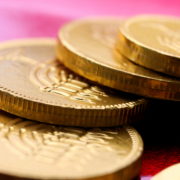PROFIT BY INVESTING OUTSIDE THE US
The Chinese economy will expand from $11.2 trillion this year to $19 trillion in 2016. Meanwhile the size of the U.S. economy will rise from $15.2 trillion to $18.8 trillion. That would take America’s share of the world output down to 17.7%, the lowest in modern times. China’s would reach 18%, and rising. Just 10 years ago, the U.S. economy was three times the size of China’s. ( Recent IMF report)
With the continued economic crisis in the U.S., the tumbling U.S. dollar, and the prospects of the U.S. losing sole superpower status, more and more investors are looking for alternatives to the traditional U.S. investment portfolio. While classic asset allocation models call for 70-85% of a portfolio to be invested in the U.S., it’s important to note that there is a whole world of investment possibilities, even local options, which are just as, or even more, intriguing than solely investing in America. The world has changed economically and to ignore the change could potentially be costly. In fact the U.S. market, as measured by the S&P 500 index, is just slightly higher than it was 10 years ago. Ten years with no growth in a portfolio would not be considered a great return.
Spanning the Globe
According to an article in Fortune magazine, 14 of the world’s 25 largest companies are actually headquartered outside the United States. The growth rates of the Asian, Latin American, Eastern European and even Israeli economies far outpace those in the United States and Western Europe.
According to the IMF World Economic Outlook, “According to IMF statistics on actual and predicted shares of global GDP, the share of GDP attributable to advanced economies has fallen significantly, from 64% in 1996 to 54% in 2008 and will dip below 50% for the first time in 2014.” Commenting on this report Fidelity adds, “In other words, there has been a fundamental shift in the economic landscape in the last 20 years which has completely altered what was previously a cozy status quo between the ‘haves’ and ‘have not’ spheres of the global economy. Emerging markets have gained an increasing share of global GDP.”
High Returns
Led by the rapidly expanding economies of Brazil,China and India, as well as countries in Eastern Europe, Asia, Latin America and even Africa, investor appetite for higher return investments has led to a newfound interest in emerging markets. The continuing policy of lowering taxes, privatizing government-run companies, and giving incentives to entrepreneurs has been instrumental in the rapid economic growth in these regions.
In fact while the last 10 years have led back to where you started from in the U.S., the Asia-Pacific region (excluding Japan) returned over 200% and Latin America came in with a whopping 550% return. That stellar performance includes a drop of 60% during the middle of 2008.
The Risk Factor
Investors looking to invest in higher economic growth markets need to be aware of the risks involved. Two of the most common risks are political (the stability of the country’s government) and currency risk (shifts in the local currency’s value in relation to the dollar’s value).
How Do You Invest Abroad?
There are 3 main ways to invest in foreign markets:
Mutual Funds are actively managed portfolios that invest according to specific strategies. International funds vary from the very broad strategies of investing in the 50 largest non-U.S. companies, to very specific funds that invest in small companies in Taiwan, for example.
ADRs (American Depositary Receipts) are shares in foreign companies that are deposited in an institutional bank account in the United States. Receipts of the deposit are issued and traded on the U.S. exchanges. Those receipts represent the underlying shares held on deposit. Most importantly, as they are denominated in U.S. dollars, ADRs allow investors to buy shares in overseas companies without the costs associated with dealing directly in a foreign stock market. This means that the average small investor doesn’t have to worry about the various currencies involved.
ETF’s (Exchange Traded Funds) are securities that track an index, a commodity or a basket of assets, like an index fund, but trade like a stock on an exchange. ETFs experience price changes throughout the day as they are bought and sold. There are plenty of ETF’s on specific countries as well as geographic regions.
Ten years is a long time to invest and see no return. Speak with your financial professional to see how you can potentially capitalize on the new economic reality.
The information contained in this article reflects the opinion of the author and not necessarily the opinion of Portfolio Resources Group, Inc., or its affiliates.
Aaron Katsman is author of the book Retirement GPS: How to Navigate Your Way to A Secure Financial Future with Global Investing (McGraw-Hill), and is a licensed financial professional both in the United States and Israel, and helps people who open investment accounts in the United States. Securities are offered through Portfolio Resources Group, Inc. (www.prginc.net). Member FINRA, SIPC, MSRB, SIFMA. For more information, visit www.aaronkatsman.com or email aaron@lighthousecapital.co.il





